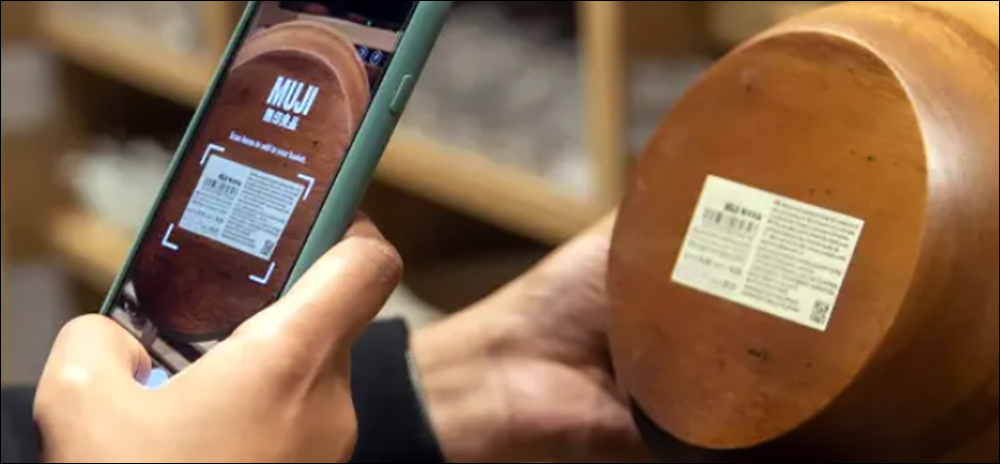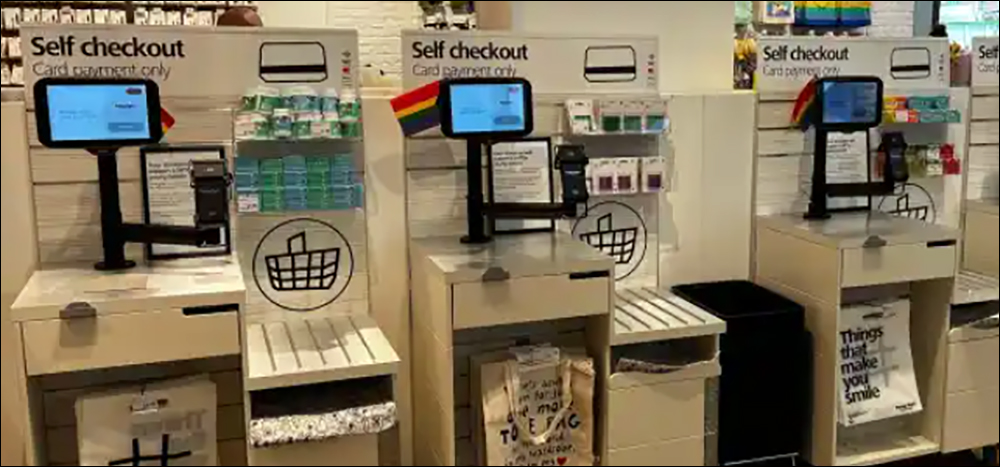Apr 28, 2023RFID Journal LIVE! 2023 will feature end-user companies discussing RFID's use in various industries, including retail and security, as well as exhibitors offering tagging solutions for multiple applications. To learn more, visit the event's website.
When queues become long at a store's points of sale (POS), retailers risk losing customers. The longer a line and related wait time are, the more likely shoppers will abandon their purchases, look for similar products online or visit competing stores. This can be especially true with regard to non-crucial purchases, such as apparel.
If a shopper wants a T-shirt but faces a 10-minute wait to purchase it, that customer might opt to buy the same product elsewhere. And if queues are long, customers may avoid shopping at a store entirely. With that in mind, MishiPay, a London-based provider of self-checkout technology, released a kiosk this year that employs UHF RFID readers to interrogate tags on the items a shopper is purchasing, thereby automating the sales process and eliminating the need for employees to work sales counters.

Customers can make mobile payments with their own phone, using barcode scans.
The company had already been selling a mobile phone-based purchasing app to retailers. That app, known as Scan and Go, enables consumers to self-purchase goods by scanning QR codes or barcodes on products to pay on the app, and then simply walk out of the store with them. "In the background, MishiPay's RFID integration ensures that all items in the customer's basket have been paid the moment the customer passes by the RFID exit gates," says Theo Sotiriou, MishiPay's chief product officer.
Several retailers are now deploying the two MishiPay solutions to offer customers a pair of purchasing options: the kiosk with an RFID tag read, as well as mobile payments with a shopper's own phone, using barcode scans. While the mobile payment solution offers complete independence from lines and in-store payment systems, MishiPay explains, the kiosk accomplishes sales faster than a standard point of sale, due to the RFID tag reads.
The company began working with an idea for mobile phone-based, frictionless self-checkout in 2016, using an app and RFID technology to identify products and conduct purchases. "You could exit without having to go somewhere to stand in line," Sotiriou says. "You don't have to be verified. Nobody has to audit your basket." At that time, however, RFID tags were not as prevalent as they are now, and they were too costly for most retailers. "There wasn't a lot of market demand for RFID at the time." The company thus opted to offer the app, leveraging QR codes, for non-RFID enabled retailers.
Mobile-based Purchasing with RFID Security
With mobile purchasing, first-time shoppers can pay without having to download an app, but they can also download the app on their iOS- or Android-based device. They would then walk through the store with a shopping basket and select items they want to buy. While placing those products in their basket, they would use their smartphone to scan each tag's QR code or barcode, thereby populating a virtual basket with items to purchase. Once they completed their shopping, they would select a "finish and pay" prompt, then use either Apply Pay or Google Pay, credit, debit or other payment method to check out.
With the sale complete, they would bag their own items or simply carry them out of the store. RFID technology would then provide the final step in the sales process. Because every item features a label that contains a built-in UHF RFID tag, a reader located at the store's doorway would detect all items being carried out. Each unique ID number would be linked to a specific product, so the software would know what was being removed from the premises.

The kiosk employs UHF RFID readers to interrogate tags on the items a shopper is purchasing.
MishiPay's RFID software manages the purchasing data on a cloud-based server, and the software is integrated with the reader gates at the door. The tag IDs are white-listed in the software as the goods are purchased, so when the tags are read, the gate is prompted to approve those items. If a tag is linked to a product that has not been sold, an audible alarm can be sounded. MishiPay calls this process frictionless, since shoppers can complete the process independent of a register or other POS device.
RFID helps retailers to detect or prevent shrinkage, such as an individual removing an unpurchased item along with other goods that have been properly paid for. The MishiPay app also enables stores to offer up-selling advice, Sotiriou says, such as displaying suggested products that customers might wish to purchase along with the merchandise they have already scanned.
MishiPay integrates its software with a retailer's existing product catalog and enterprise resource planning system, so that price promotions or other information related to specific items can be updated at any time. The sales data updates in real time, enabling a retailer's management to know exactly what has been sold as products are selected, even from a remote location such as headquarters offices.
Automated Checkout with RFID Kiosks
This spring, the solution is being offered as both the mobile version and as an RFID-enabled kiosk. In the latter case, customers can select the products they want at a store. Then, instead of scanning the barcode labels on those items, they can proceed to an unmanned kiosk and simply place the products within a basket. An RFID reader, via antennas built into the kiosk basket, captures the unique IDs of all the product tags to identify what is being purchased.

Theo Sotiriou
The system displays the products purchased, along with their price, any sales or promotions, and the total cost. The shopper then approves the final payment and uses their payment method of choice, such as credit card or a payment app on their phone. Businesses working with MishiPay on frictionless payment solutions are opting to deploy both solutions to offer shoppers choices, the company reports.
As a shopper, Sotiriou says, "I could actually just use my phone if I prefer, or I can go to the kiosk, which might be faster. This is what makes MishiPay different." The value proposition for retailers, he adds, is that with two options for customers, mobile payments and kiosk, they do not need to purchase as many kiosks to ensure sales are conducted efficiently and quickly. "You don't have to buy ten different hardware units. You can buy five of them, because the other five can be the users' own phones."
MishiPay does not provide the RFID hardware used at stores exits or in the kiosks. Rather, it selects the appropriate product for a retailer's application, then works with technology companies such as SML, Keonn, Avery Dennison Smartrac and Zebra Technologies. "We're completely hardware-agnostic," Sotiriou states.
Leveraging Growing Number of Tagged Goods
According to Sotiriou, the solutions leverage the increasingly common deployment of RFID tags that are being applied by manufacturers as products are made, especially in apparel. Some retailers are receiving goods in-store with RFID chips already built directly into garments, or in sewn-in labels, making the tags difficult to remove. That helps to ensure that bad actors do not try to tear tags off and remove products undetected, the company explains.
MishiPay's customers are most often apparel companies that have a closed supply chain. These companies sell their own products and are tagging them as they are made by their own manufacturer. Retailers are less likely to pay the cost of tagging products once they are received at the store, Sotiriou notes. Thus, they are less likely to be using the RFID-based solutions yet. Despite that fact, he says, "More and more brands are putting tags on their products, for tracking inventory in the backrooms and sales floors, and the MishiPay system for these retailers offers a way to gain further value from the tags."
MishiPay claims the technology has been providing a return on investment within less than three months, based on lower labor costs, as well as increased sales, since products are easier to buy. The company says shoppers spend 14 to 35 percent more money when using the frictionless system. Additionally, Sotiriou says, employees not spending their time with POS work can aid customers with their shopping, as well as replenish shelves.
Although most kiosk solution adopters are likely to be apparel retailers initially, Sotiriou says, the company has customers across numerous markets for its mobile payment solution. These include Flying Tiger Copenhagen and MUJI across Europe, as well as airport convenience stores throughout the United States and Virgin Megastore in the United Arab Emirates.
Key Takeaways:
- Retailers globally, including in Europe and North America, are using a system that enables purchasing with a mobile phone or kiosk, depending on a customer's preference.
- According to MishiPay, the solution increases cross-selling opportunities, helps to foster customer loyalty and reduces staff labor hours.

